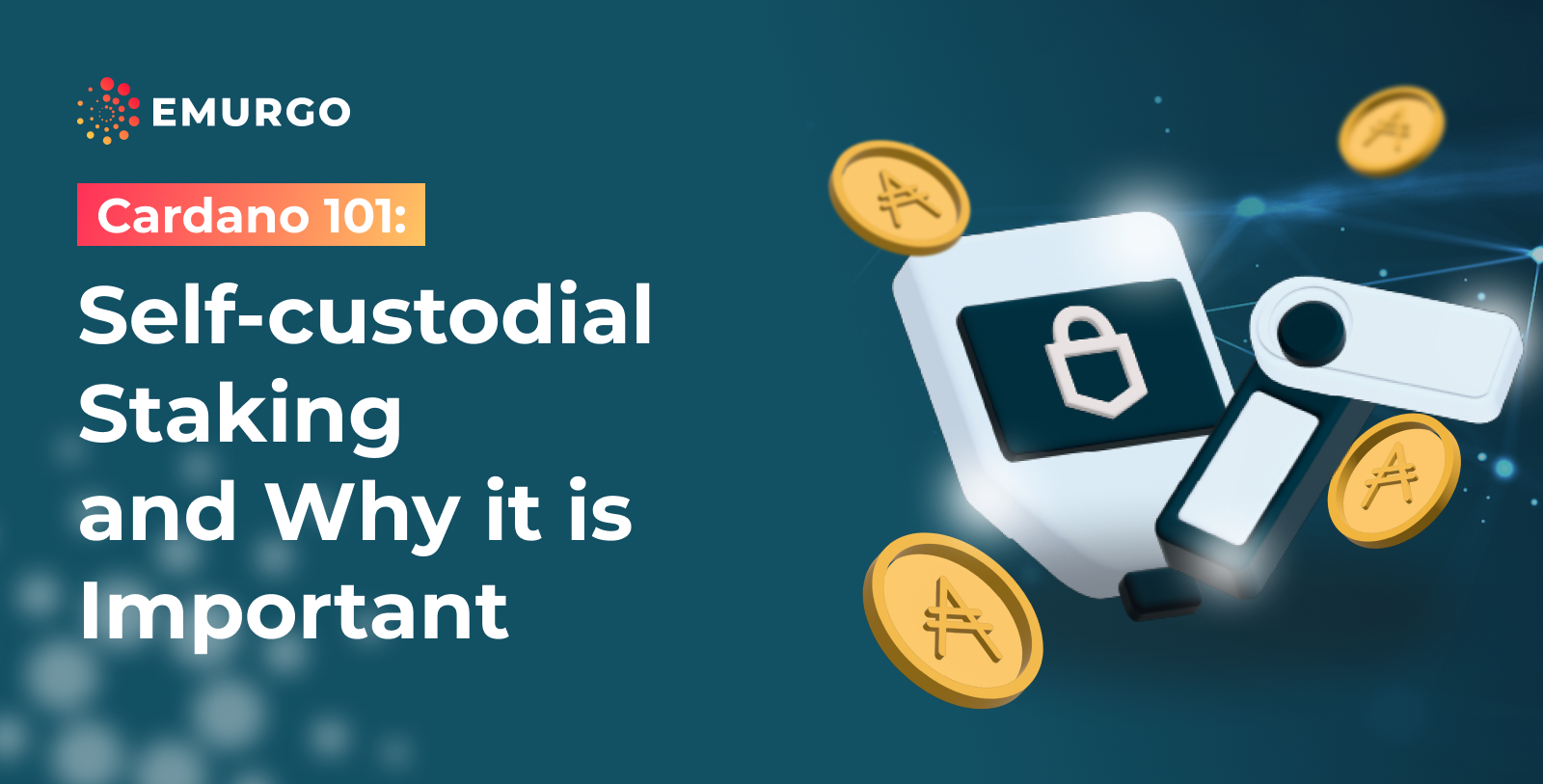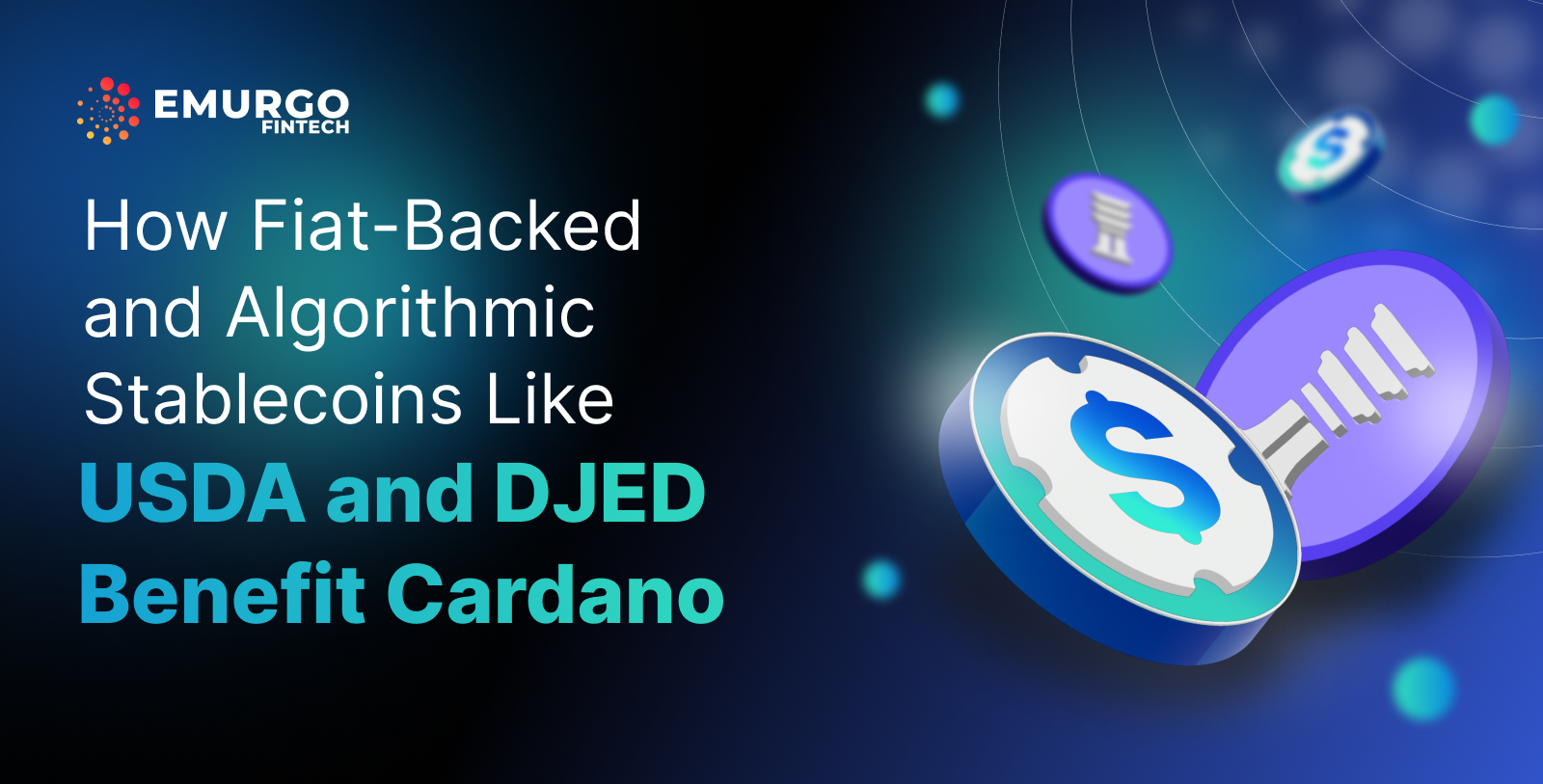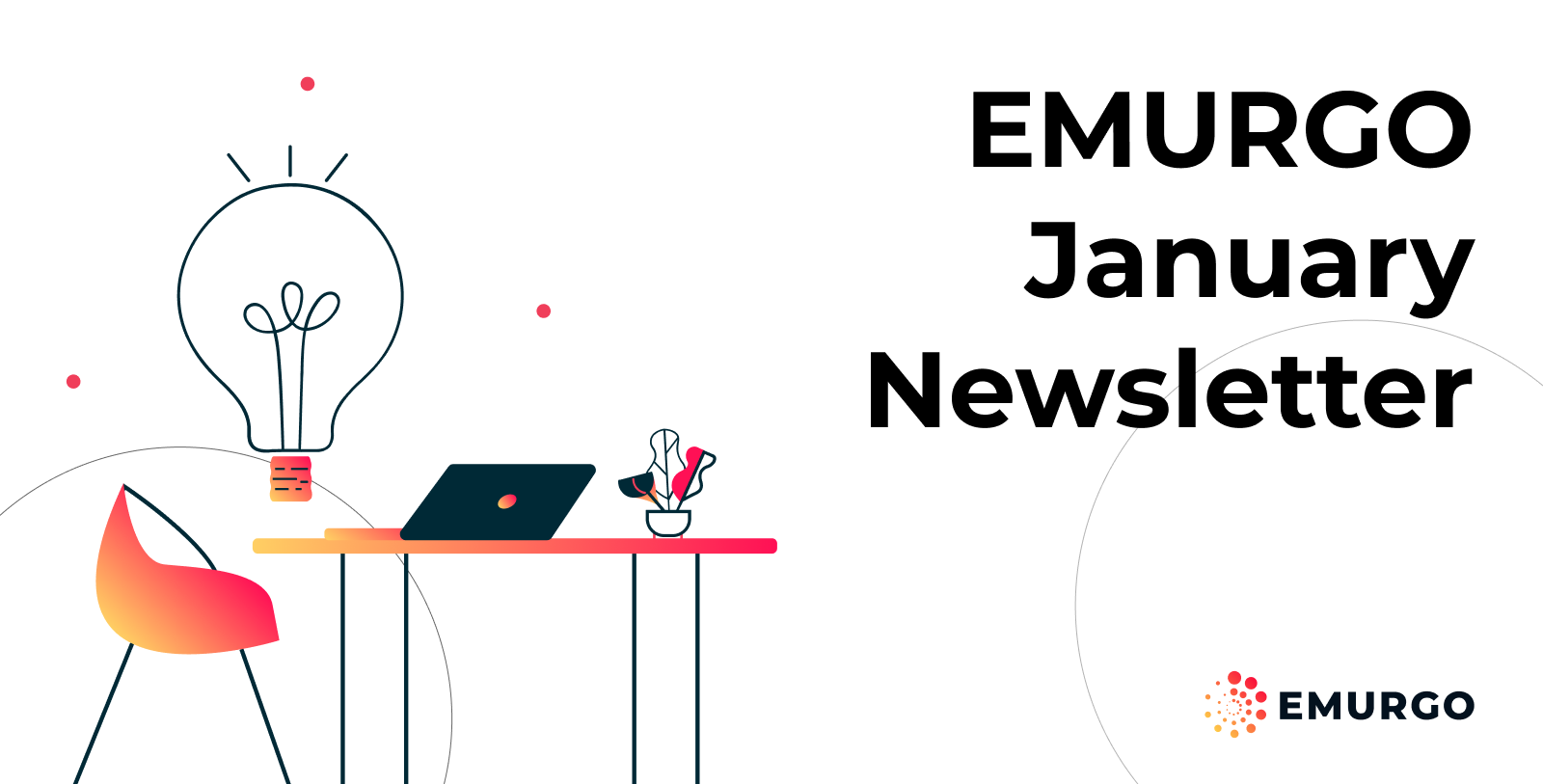Learn about Web3 and Cardano Blockchain with EMURGO Academy
As a founding entity of the Cardano blockchain, EMURGO’s education unit EMURGO Academy offers several online blockchain courses for students with both technical and non-technical backgrounds.
Taught by instructors with real-world experience in blockchain, EMURGO Academy’s courses are an ideal fit for those wanting to prepare for a career in blockchain.
There are increasing Web3 blockchain jobs in DeFi, DAOs, NFTs, wallets, and more.
EMURGO Academy’s blockchain courses are designed to help you learn everything you need to know about blockchain and Cardano to start a career in blockchain.
About Cardano’s Project Catalyst
Project Catalyst is a decentralized funding platform for the Cardano blockchain.
It’s an extension of the Cardano treasury and the testing ground for the future governance of Cardano.
To date, it has run nine Project Catalyst Fund rounds.
Each fund lasts for around 3 months with a week of recess between funds.
The Project Catalyst representation is achieved via a body called the Catalyst Circle. This model still is experimental, and at the moment, the Circle has no actual authority.
5 elected members represent the following:
- General Cardano ADA holders
- Proposer Reviewers (PRs)
- Funded Proposals
- Cardano Stake Pool Operators (SPOs)
- Toolmakers & Maintainers
This body is elected by voting of the Cardano community and tends to last for two funding rounds.
The Catalyst Circle has not been allocated a budget. They are funded via proposals over the Project Catalyst system. If the proposals are unsuccessful, Catalyst Circle has no funds to perform its functions.
There are two permanent members of the Catalyst Circle: one designated by IOG and the other by the Cardano Foundation.
Normally, the Catalyst Circle interacts with the Cardano community during the Catalyst town hall which is held every Wednesday.
At the town hall, the Circle updates the Cardano community and they also have a weekly meeting where they discuss amongst each other.
Project Catalyst Funds
The funds to finance each of the rounds come from the Cardano treasury.
Each fund has a total of 16 million ADA.
Starting in Project Catalyst Fund 10, all proposals will have to request their budgets in ADA and have to take into account any possible price volatility when they do it.
Roughly 12 million ADA goes to the finance of the proposals.
The rest of the budget is divided into incentives for the proposal reviewers, veteran proposer reviewers, Challenge Teams, referrals, and voters.
Project Catalyst roles
There are several roles in Cardano Project Catalyst:
Proposer: The individuals or teams that write proposals for each Cardano Project Catalyst Fund.
Proposal Assessor (PA): The people that review the proposals. They give it a score based on criteria outlined later in this article.
Veteran Proposal Reviewer (VPR): They are in charge of quality control of the Proposal Reviewers’ work. They make sure all reviews are appropriate.
Challenge Team: Groups of people that take charge of promoting and helping the teams entering the particular challenge. These are Incentivized Roles, as members of a Challenge Team will receive a reward.
Referrer: Community members who bring new proposers to the ecosystem to participate in Catalyst funding. In case these potential funded proposers receive funding, the Referrer will receive a previously established economic incentive.
Voter: The Cardano ADA holders register their wallets to vote.
How the Project Catalyst funding process works
Each fund on the Catalyst platform follows the same structure:
Insight Sharing
in the first stage, the Catalyst challenges are open for comments by the general public. Here anyone is free to make a post regarding how they think the challenge should be used, what proposals fit in the category, and any general idea.
The posts do not reflect on the proposal and don’t factor directly into the selection process. Yet, here is where teams can get their first traction. Also, many successful proposals begin as a comment that can be used to test the idea. This phase lasts for 7 days.
Proposal Draft Submission
In the second stage, the first draft of the proposal is presented. People can read it and comment on how they feel regarding the idea. The comments are not monetarily incentivized, so very few people comment on them.
In this stage, projects aim to leverage their communities to get them to comment. That way the proposal becomes more visible and starts showing up at the top of the page. It’s crucial to have an engagement early. This also lasts for 7 days.
Proposal Refinement
At this point, proposers are supposed to make adjustments to the proposal based on the feedback given by the comments. Again, very few people comment, so it’s hard to get real feedback. This also lasts for 7 days.
Proposal Finalization
This is the last week where it’s possible to edit the proposal. By now, the community supposedly helped proposers by commenting on the platform and giving them useful feedback to make the proposals better.
Organic comments tend to be very rare. Normally projects just have their communities comment to make it look like people are taking notice. Again, it’s hard to get a meaningful impact on the proposals because comments are not incentivized with payments. This last editing time also lasts for 7 days.
In total, proposers have 3 weeks to make edits to their proposal. From submission to finalization edits can be made and comments are open so the community can give insights to the proposers. Submissions are also open during those 3 weeks, there are a lot of proposals that are added during the last week or even days.
Proposal Review
During this period proposals are locked and cannot be edited any longer.
Proposal Assessors go through the proposals they find interesting and score them on three categories:
- Impact
- Feasibility
- Auditability
The aim is to have at least five reviews per proposal.
The impact is how aligned the proposal is with the objective of the challenge.
Second, how much impact will the proposal have on the Cardano ecosystem and the blockchain industry in general?
Feasibility is based on how possible it is that this proposal will be completed. Normally CAs look at the members of the team, their experience, the roadmap of the proposal, and the budget requested.
Auditability is a measure of all the information in the proposal that would allow the community to follow its progress. Here clear and objective KPIs, goals, metrics, and a budget breakdown are important.
Each category is scored using a 5 stars metric. The final score is an average of the reviews by all Proposal Assessors.
It’s impossible to know ahead of time how many Proposal Assessors will review a proposal.
Some can have 5 reviews, others more than 10.
Generally, Catalyst aims to have at least 5 reviews for every proposal.
Proposal Assessors are general members of the community. Anyone can join to be a Proposal Assessor. The only restriction is that if you are a proposer and a Proposal Assessor, you cannot review proposals in the same category you published yours.
Assess QA
After the initial review, proposers are given 4 days to review the work of the PAs.
Here they flag any review that is unhelpful, vague, offensive, or generally of poor quality. All of these complaints are then passed to the Veteran Proposal Assessors.
These are people who have been PAs for 3 consecutive funds and have experience with the PA process. They go over all of the reviews made by the PAs, and vote if a particular review should be removed.
They compare the original review with the comment made by the proposer flagging it and decide if it should be taken down. The proposers have 4 days to flag reviews and the Veteran Proposal Assessors have 10 days to decide on the outcome.
The Veteran Proposal Assessors go through all the reviews made by the PAs, not only the ones flagged by proposers. In that way, they can assess the quality of all reviews and try to make the process fairer.
Snapshot
The snapshot is when the balance on all the Cardano wallets registered to vote is taken. This is what gives them their final voting power. Also, here the final score of the proposals is published, as the Veteran Proposal Assessors finalize their work of reviewing the work of the PAs.
Governance Phase
Here the community is given 3 weeks to vote on the different proposals. Anyone who registered can vote for as many proposals as they want. The vote can either be a favorable upvote or a negative downvote.
Tallying
Finally, the last week is used to tally all of the votes and announce all the funded proposals at the end of the cycle.
Possible upcoming changes to Project Catalyst
IOG is preparing to roll out the first cohort of Decentralized Representatives (dReps) during Fund 10. They are the first interaction of the Liquid Democracy system, where people can delegate their voting power to a person, and that person would vote representing all of those who delegated to this individual.
Along with the dReps, a new voting platform will be tested with this first cohort.
It will be a profound change to the Project Catalyst process.
It’ll be an iterative process and each new upcoming Fund will adjust how dReps work to refine the process.
Start a career in Web3 and blockchain
As the official commercial arm and a founding entity of the Cardano blockchain, EMURGO is uniquely positioned to leverage its extensive knowledge of Cardano’s technical development to offer curated educational courses on Cardano to interested students.
All courses are taught by professional instructors with actual blockchain experience.
EMURGO Academy, EMURGO’s education unit, has now expanded to offer six different courses on Cardano to a range of student types interested in becoming a Cardano developer, becoming a Cardano entrepreneur, becoming a Cardano business analyst/consultant, and more.
For more information on each of the courses and to contact a representative, please visit the link here now!
About EMURGO Academy
- Official Homepage: education.dev.emurgo.io
- Twitter: @emurgo_in
- Facebook: @Emurgoacademy
- Instagram: @emurgoacademy
- LinkedIn: @emurgo-in
- Discord: EMURGO Academy Community
- Telegram: EMURGO Academy
About EMURGO
- Official Homepage: dev.emurgo.io
- Twitter (Global): @EMURGO_io
- YouTube: EMURGO channel
- Discord: EMURGO Community
- Facebook: @EMURGO.io
- Instagram: @EMURGO_io
- LinkedIn: @EMURGO_io



